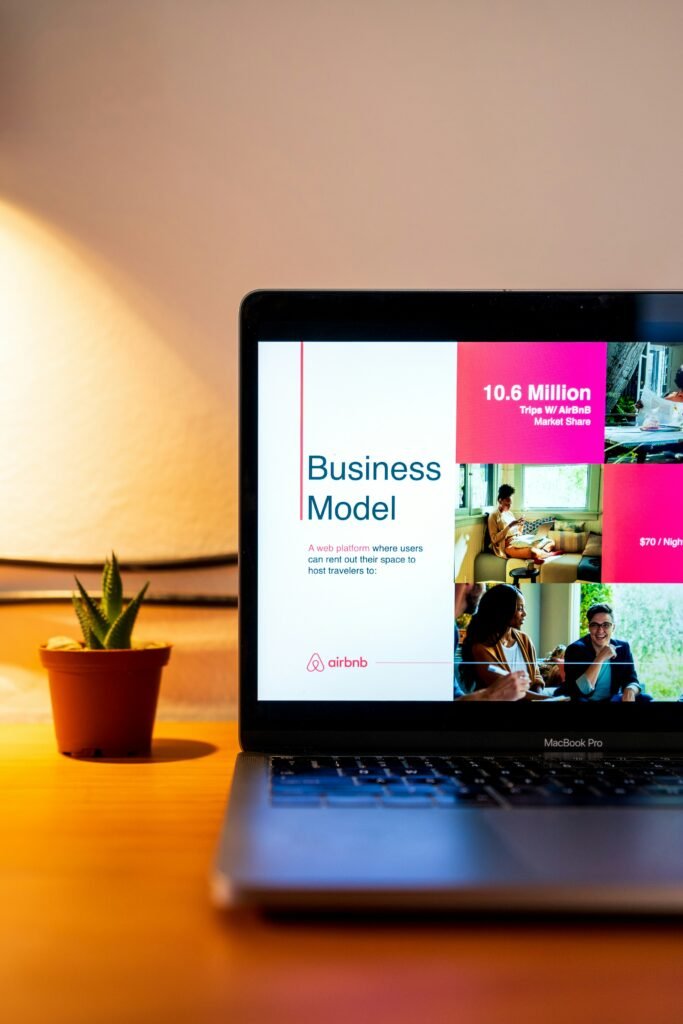Starting an online business doesn’t require a fortune. Many successful entrepreneurs began with just a small investment and grew their businesses over time. You can launch a viable online venture with less than $150 by focusing on low-cost business models and free tools.

With careful planning and resource allocation, a $150 budget is enough to establish your online business foundation and start generating income. This includes setting up a basic website, creating social media accounts, and implementing simple marketing strategies that connect you with potential customers.
The key is to choose a business idea that matches your skills and requires minimal startup costs. Digital products, service-based businesses, and dropshipping are excellent options for budget-conscious entrepreneurs looking to test their ideas without significant financial risk.
Key Takeaways
- A successful online business can be launched with less than $150 by choosing low-cost business models and utilizing free digital tools.
- Proper validation of business ideas through market research and customer feedback prevents wasting resources on unprofitable ventures.
- Strategic investment in essential tools while leveraging free alternatives helps maximize limited startup funds and enables future growth.
Understanding Online Business Models

Starting an online business with a small budget requires picking the right business model. These models differ in startup costs, time investments, and potential profits.
Types of Low-Cost Online Businesses
Become a referral broker for a FinTech company in the US. Drop shipping lets you sell products without inventory. You list items on your website, and suppliers ship directly to customers. This requires minimal upfront investment—just website costs and marketing. Selling Digital products include ebooks, courses, templates, and software. Create once, sell repeatedly with no inventory costs. Many creators start with just $50 for basic tools. Affiliate marketing involves promoting other companies’ products and earning commissions on sales. Setup costs include a basic website ($60-80/year) and minimal marketing. Service-based businesses like freelance writing, virtual assistance, or graphic design need only a portfolio website and basic tools. Many start with under $75 total.
Choosing the Right Model for Your Budget
Consider time vs. money tradeoffs. Service businesses need minimal investment but more time. Product-based models require more upfront work but can generate passive income. Assess your skills to minimize outsourcing costs. Use your existing expertise to reduce learning curves and expenses. Start with a hybrid approach. Many successful entrepreneurs begin with services to generate cash flow, then gradually transition to products. This table shows approximate startup costs:
| Business Model | Typical Startup Cost | Time Investment |
|---|---|---|
| Services | $30-75 | High |
| Affiliate | $60-90 | Medium |
| Digital Products | $50-95 | Medium-High |
| Dropshipping | $80-100 | Medium |
Online Business Trends in 2025
Micro-niches are gaining popularity. Businesses targeting very specific audiences often see higher conversion rates and lower marketing costs. No-code tools have revolutionized startup costs. Website builders, automation platforms, and design tools now offer sophisticated features without requiring technical skills. Subscription models work for many business types. Even small businesses can create membership sites or recurring service packages for steady income. AI tools now handle tasks that previously required expensive freelancers. Content creation, customer service, and basic design can be automated for under $30/month. Social commerce continues growing. Selling directly through platforms like Instagram and TikTok requires minimal setup costs while reaching large audiences.
Planning Your $100 Online Business

Starting an online business with just $100 requires careful planning and strategic decision-making. The right approach can maximize your limited budget while setting you up for future growth.
Defining Your Value Proposition
A value proposition clearly explains why customers should choose your business over competitors. It identifies the specific problems you solve and the benefits you deliver.
Think about what makes your offering unique. Are you faster, cheaper, or better quality than alternatives? Perhaps you offer exceptional customer service or solve a problem in a new way.
Test your value proposition by asking: “Why would someone pay for this?” The answer should be compelling and straightforward.
Your value proposition should be:
- Specific rather than generic
- Measurable in terms of benefits
- Relevant to your target audience
Remember to communicate your value proposition in all marketing materials. This consistency helps build brand recognition even on a tight budget.
Identifying a Profitable Niche
Finding the right niche is crucial when starting with limited funds. A well-chosen niche allows you to compete effectively despite your small budget.
Research potential niches by:
- Examining your own interests and expertise
- Identifying problems you can solve
- Evaluating market demand through keyword research
- Analyzing competition levels
Look for niches with steady demand but not oversaturated with competitors. Digital products often work well for budget-constrained startups since they have minimal production costs.
Use free tools like Google Trends to verify if interest in your niche is growing or declining. Aim for markets showing consistent or increasing popularity.
Consider sub-niches within larger categories. For example, instead of “fitness,” focus on “home workouts for busy parents” to stand out with less marketing investment.
Setting Clear and Achievable Goals
Effective business planning requires establishing concrete goals that guide your actions and measure progress.
Start with short-term objectives for your first 30, 60, and 90 days. These might include launching your website, acquiring your first 10 customers, or reaching $500 in monthly revenue.
Break larger goals into smaller milestones. This approach creates a clear roadmap and provides frequent opportunities to celebrate progress.
Use the SMART framework to structure your goals:
- Specific: Precisely define what you want to accomplish
- Measurable: Include concrete numbers and dates
- Achievable: Be realistic given your $100 budget
- Relevant: Align with your business purpose
- Time-bound: Set deadlines for accountability
Track key metrics that reflect business health without requiring expensive tools. Free analytics platforms can monitor website traffic, conversion rates, and customer acquisition costs.
Validating Your Business Idea on a Budget

Before spending money on your business, you need to make sure people actually want what you’re selling. Smart validation can be done with almost no money and saves you from expensive mistakes.
Conducting Market Research for Free
Start by using free online tools to understand your potential customers. Google Trends shows you what people are searching for and whether interest is growing or declining. Create simple surveys with Google Forms and share them on social media to gather feedback.
Join Facebook groups and Reddit communities where your target customers hang out. These platforms provide valuable insights into customer problems and needs without costing anything.
Public libraries offer free access to market research databases that would normally cost hundreds of dollars. Many libraries provide online access to resources like IBISWorld or Statista.
Free Market Research Tools:
- Google Trends
- Social media polls
- Reddit communities
- Facebook groups
- Library resources
Analyzing Your Competition
Studying competitors helps identify market gaps without spending money. Create a simple spreadsheet to track competitor offerings, prices, and customer reviews.
Sign up for competitor email lists to monitor their marketing strategies and promotions. This reveals what messaging works in your industry.
Use tools like SimilarWeb’s free version to check competitors’ website traffic and sources. This shows which marketing channels might work best for your business.
Competitor Analysis Checklist:
| What to Analyze | Why It Matters |
|---|---|
| Pricing strategy | Find competitive price points |
| Customer reviews | Identify unmet needs |
| Marketing channels | Discover effective platforms |
| Product features | Spot market gaps |
Testing Demand With Minimal Investment
Create a simple landing page using free platforms like Carrd or Google Sites. Add a “pre-order” or “notify me” button to gauge interest without having a finished product.
Run small-scale social media ads with just $20-30 to test different messages and see which ones get clicks. Facebook and Instagram ads can target specific demographics for as little as $1 per day.
Use pre-sales to validate demand and generate startup capital. Offer early-bird discounts to incentivize purchases before your product is complete.
Consider a “soft launch” with a minimum viable product to get real customer feedback. This approach lets you improve based on actual user experience rather than assumptions.
Selecting Essential Tools and Platforms

Starting an online business on a tight budget requires careful selection of tools and platforms. The right choices can help maximize your limited resources while still creating a professional online presence.
Free and Affordable Website Builders
Several website builders offer free or low-cost options for new entrepreneurs. Wix provides a free plan with basic features and affordable premium plans starting at $14/month. WordPress.org is free to use, though you’ll need hosting (around $3-7/month) and a domain name ($12/year).
Google Sites offers a completely free option for simple websites. It integrates well with other Google tools but has limited customization.
Carrd stands out for single-page websites at just $19/year for the Pro plan. It’s perfect for landing pages or simple business sites.
When choosing a platform, consider:
- Ease of use: How technical are your skills?
- Scalability: Will it grow with your business?
- Mobile responsiveness: All modern sites must look good on phones
Leveraging Low-Cost E-Commerce Solutions
For selling products online, several affordable e-commerce platforms exist. Shopify Lite costs only $9/month and lets you add a buy button to an existing website or sell via Facebook.
Etsy charges $0.20 per listing plus transaction fees, making it ideal for crafters and artisans with low inventory. There’s no monthly fee to get started.
Square Online offers a free plan with unlimited products and only charges per transaction. This works well for businesses with physical locations expanding online.
Social media platforms like Instagram and Facebook provide free selling features. They’re perfect for testing product ideas before investing in a dedicated store.
WooCommerce is free to install on WordPress sites. You’ll only pay for hosting and possibly premium extensions as you grow.
Integrating Payment Gateways Efficiently
Payment processing is essential for any online business. PayPal offers a standard rate of 2.9% + $0.30 per transaction with no monthly fees. It’s widely recognized and trusted by customers.
Stripe matches PayPal’s standard rates and provides more customization options. It works well for businesses expecting international customers.
Square charges the same 2.9% + $0.30 for online transactions. Its strength lies in seamless integration between in-person and online sales.
For budget efficiency, consider these strategies:
- Start with just 1-2 payment options to minimize fees
- Choose gateways that don’t require monthly minimums
- Look for options with simple flat-rate pricing
- Avoid gateways with setup fees or long-term contracts
Building Your Online Presence With Limited Funds

Creating a strong online presence doesn’t require a large investment. Smart choices about websites, social media, and branding can help new business owners establish themselves effectively while keeping costs minimal.
Creating a Basic Website or Storefront
Several affordable options exist for building your first business website. Platforms like WordPress.com, Wix, and Squarespace offer free or low-cost plans under $20 per month. These services include:
- Domain name (often free for the first year)
- Professional templates
- Mobile-responsive design
- Basic e-commerce functionality
For pure e-commerce businesses, consider specialized platforms. Shopify offers a basic plan at $29 monthly, while Etsy charges only listing fees (20¢ per item) plus transaction fees. Many entrepreneurs start on Etsy before building their own website.
Free alternatives exist for those with zero budget. A business page on Facebook or Instagram Shopping can serve as a temporary storefront while saving for a dedicated website. These options provide basic selling functionality without monthly fees.
Establishing Social Media Profiles
Social media platforms offer free marketing opportunities for new businesses. Begin by selecting 2-3 platforms that align with the target audience rather than trying to maintain a presence everywhere.
Recommended platforms by business type:
- Product-based: Instagram, Pinterest, Facebook
- Service-based: LinkedIn, Twitter, Facebook
- B2B: LinkedIn, Twitter
Create complete profiles with:
- Consistent business name
- Professional profile photo (logo or high-quality product image)
- Compelling bio with clear value proposition
- Link to website or other main platform
Content creation doesn’t require expensive equipment. Smartphones can capture high-quality images and videos. Free apps like Canva provide professional design templates for posts, stories, and graphics.
Crafting a Professional Brand Identity
Brand identity extends beyond logos to include consistent visual elements and messaging. DIY branding is entirely possible on a tight budget.
Start with free or low-cost logo creation using:
- Canva (free basic plan)
- Looka (pay only for files you download)
- Fiverr designers ($5-25 for basic logos)
Develop a simple brand guide that includes:
- Primary and secondary colors (with hex codes)
- Font choices for headings and body text
- Brand voice guidelines (formal vs. casual, etc.)
- Basic templates for social posts
Consistency matters more than complexity. Simple, well-executed branding appears more professional than complicated designs applied inconsistently. Save brand elements in accessible locations for easy reference when creating new materials.
Developing and Sourcing Products or Services

Creating affordable products or services is crucial for starting an online business with limited funds. The right approach can maximize profits while keeping initial investment low.
Digital Products You Can Create Cheaply
Digital products offer excellent profit margins since they require no physical inventory or shipping costs. E-books can be created using free tools like Google Docs and converted to PDF format. A well-researched 30-page guide on a specialized topic can sell for $15-30 with nearly 100% profit.
Online courses can be developed using platforms like Teachable or Thinkific, which offer free plans for beginners. Content creators can record videos with smartphone cameras and edit with free software like DaVinci Resolve.
Printable templates for planners, budgets, or calendars can be designed using Canva’s free version. Many entrepreneurs sell template packs for $5-15 each with minimal creation costs.
Digital art and design assets like fonts, icons, or illustrations can be created with free tools like Inkscape or GIMP. These assets can be sold on marketplaces like Creative Market or Etsy.
Dropshipping and Print-on-Demand Options
Dropshipping eliminates inventory costs by having suppliers ship products directly to customers. Platforms like Oberlo connect with AliExpress suppliers for free, though transaction fees apply per sale.
Print-on-demand services such as Printful or Printify produce custom-designed products only after purchase. Entrepreneurs can create unique designs for t-shirts, mugs, and posters without upfront inventory costs.
These models require careful supplier selection. Business owners should order sample products ($20-30) to verify quality before selling to customers. Many successful print-on-demand businesses start with just 5-10 design concepts across different products.
Free design tools like Canva provide templates for creating marketable designs. The key advantage is zero inventory risk while testing different product ideas.
Offering Freelance Services Online
Service-based businesses often require the lowest startup costs. Freelance writing services can begin with just a computer and internet connection. Writers can find clients on platforms like Upwork or Fiverr with free account creation.
Virtual assistance services require minimal tools beyond basic office software. Virtual assistants typically charge $15-40 per hour depending on skills and experience.
Social media management services can start with free scheduling tools like Buffer’s basic plan. Entrepreneurs can develop service packages ranging from $200-500 monthly per client.
Web development and graphic design services can utilize free software like WordPress or GIMP. These technical services often command higher rates, ranging from $30-80 per hour even for beginners.
Creating service packages with clear deliverables helps attract clients. Most successful service providers start by specializing in one industry to build expertise and referrals.
Cost-Effective Marketing Strategies

Marketing your online business doesn’t have to drain your limited startup budget. There are several free and low-cost options that can drive significant traffic and sales when implemented correctly.
Organic Social Media Marketing Tactics
Choose 2-3 social platforms where your target customers spend time rather than trying to be everywhere. Facebook, Instagram, and Pinterest work well for visual products, while LinkedIn is better for B2B services.
Create a content calendar to plan posts in advance. Aim for 3-5 weekly posts with a mix of:
- Educational content (how-to guides, tips)
- Behind-the-scenes glimpses of your business
- Customer testimonials or reviews
- Promotional content (limit to 20% of posts)
Use free tools like Canva to create professional-looking graphics. Hashtag research tools such as Hashtagify help identify relevant tags to expand your reach without spending money.
Engagement matters more than follower count. Respond to all comments and messages promptly to build relationships with potential customers.
Building an Email List for Free
Email marketing delivers an average ROI of $42 for every $1 spent, making it one of the most cost-effective marketing channels available.
Start with a free plan from providers like MailerLite or SendinBlue, which offer basic features at no cost for small lists. Create a simple lead magnet to encourage signups:
- Free PDF guide
- Discount code
- Mini-course delivered by email
- Useful checklist or template
Place signup forms strategically on your website, especially on high-traffic pages. The homepage, blog posts, and product pages typically convert well.
Segment your list based on customer interests or behaviors. Even basic segmentation improves open rates by 14% compared to unsegmented campaigns.
Send valuable content consistently—aim for weekly or bi-weekly emails that help subscribers solve problems.
